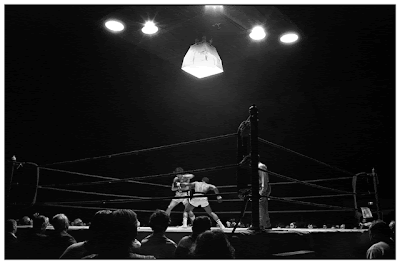Day 16
Question by : none - "Why our present keyboard have this random arrangement?"
Take a look to your keyboard, everyday you use it, and some of you maybe use it on your phone. Now let's take a detailed look, and imagine it for a while, why they had this "random" arrangement. Why didn't sort it from A,B,C,D to Z?
This is maybe an interesting and "out-of-the-box" invention. We should know that every invention ever made was meant to made human's life easier. But unfortunately, this QWERTY arrangement was meant to harden it, and in contrary, this particular arrangement of letters on a keyboard is the near-universal standard for the entire English-speaking world.
The History
To understand how it get it's arrangement, we should travel back to the early invention of computer, the great-grandmother, Typewriter. The first practical typewriter was patented in the United States in 1868 by Christopher Latham Sholes. His machine was known as the type-writer. It had a movable carriage, a lever for turning paper from line to line, and a keyboard on which the letters were arranged in alphabetical order (A-Z). But Sholes had a problem. Sholes' original prototypes had a problem with the bars colliding with each other and jamming. So the story goes that he arranged the keys with the most common letters in hard to reach spots, to slow typists down and try to avoid this problem.

Sholes' early prototype of QWERTY layout
QWERTY's effect reducing those annoying clashes, was determined to speed up typing rather than slow it down. Sholes then went to Remington, the arms manufacturer, to have their machines mass-produced. In 1874 Remington & Sons manufactured the first commercial typewriter, called the Remington Number 1. This typewriter used the "QWERTY" keyboard. The name "QWERTY" for our typewriter keyboard comes from the first six letters in the top alphabet row.
The Keyboard's Development
Like an old proverb said, "nobody perfect", this QWERTY layout wasn't the perfect one, in fact it wasn't the effective one. By the time goes, many researchers and typist trying to find more effective way of typing. One of the considered contender of this QWERTY layout was DVORAK layout, invented by Dr. August Dvorak at 1940.

Comparation between DVORAK and QWERTY (red lettered)
The QWERTY keyboard is very different from the DVORAK keyboard layout. The DVORAK keyboard layout tries to minimize the distance traveled by the fingers. It also tries to make the typist alternate hands on consecutive letters as often as possible. DVORAK's home row uses all five vowels and the five most common consonants: AOEUIDHTNS. With the vowels on one side and consonants on the other, a rough typing rhythm would be established as each hand would tend to alternate. With the DVORAK keyboard, a typist can type about 400 of the English language's most common words without ever leaving the home row, while QWERTY is 100. The home row letters on DVORAK do a total of 70% of the work. On QWERTY they do only 32%.

The comparation of effectiveness
the ideal number is 50-50, however, the closest one to 50 considered more effective
However, the DVORAK keyboard is no more efficient than QWERTY. An independent study in 1956 showed that QWERTY typists and DVORAK typists had about the same rate of speed, and continued studies don't show a clear winner between the two (to see the table of effectiveness, see the diagram above). This may explain why QWERTY is still the standard. Besides, many people and typist already familiar with this QWERTY layout, making it harder for them to adapt again. Just a matter of habit, i think.
The Other Development
Maybe this is a little bit different from QWERTY layout, but this one definitely made by it's layout. These layouts below are considered as a standard for it's own country. Some examples are : QWERTZ, used in Hungaria, Germany, Switzerland ; AZERTY, used in French and Belgium ; QZERTY ; and many more including Dvorak for left hand, for right hand, and for both hands.

AZERTY layout

QWERTZ layout

Hebrew layout

Read More

























































